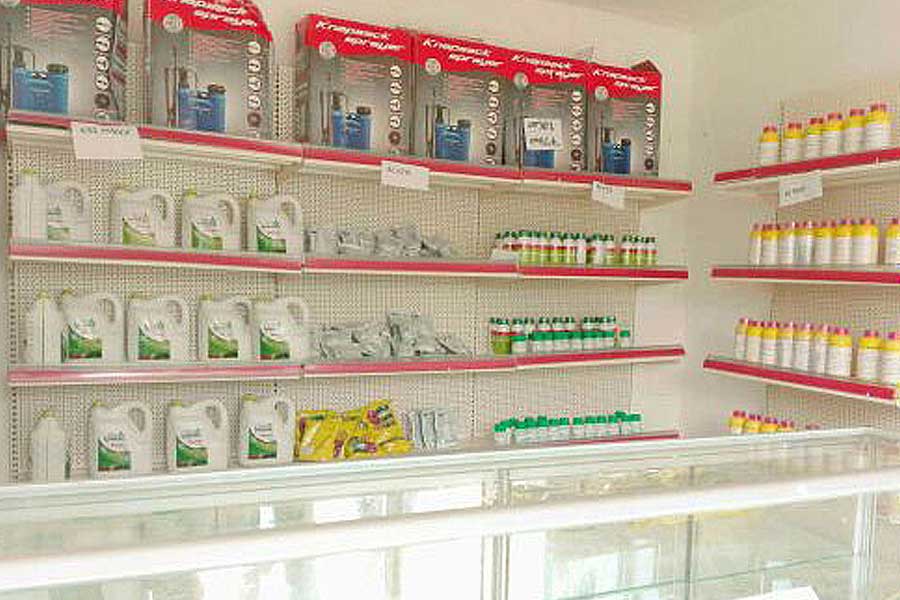
Radar | Apr 25,2020
Ethiopia's plan to export electricity to Kenya may be in jeopardy as constructing the 500kv electricity lines connecting the two countries faces more delays.
Even though Ethiopia has completed the construction of the 412Km line and substations on its side, Kenya is yet to do the same due to land disputes arising from the right of way for roads.
Jointly funded by the African Development Bank (AfDB) and the World Bank, the project was operational last year. Delays will hold Ethiopia back from exporting a planned 200mw of electricity, earning the country eight million dollars a month. This has created concerns among Ethiopia`s officials who fear that the country may not meet its ambition of generating one billion dollars in annual electricity exports to neighbouring countries beginning in 2023.
"We've been ready to start exporting the electricity beginning this year," said Hailemariam Moges, senior engineer for the Ethiopia-Kenya Electricity Highway Project. "However, with the delay on Kenya's side, doing so has not been possible."
Ethiopia is investing heavily in the power sector, hoping to exceed 10,000mw in power generation capacity. The completion of the GERD is a flagship national project, increasing power output by more than 100pc when all its 15 turbines began to operate.
It has obtained a 335 million dollars concessional loan from the two multilateral lenders, with 40pc of the loan secured from the AfDB. With a grace period of 30 years, debt servicing for both loans will begin in three decades.
The Ethiopian Electric Power (EEP) has already finalised the commissioning and testing of the electricity lines, while Siemens, contracted for the construction of power converter stations, has delivered on its obligations. According to experts working at the project site, the process is now at the post-construction stage, making some minor corrections. Kenya was expected to construct 633Km of electricity lines and build a converter station plant, both of which are yet to be delivered due to a delay caused by issues with right of way for roads and construction failures, according to sources.
Even though the building of the electricity lines has been delayed because of court cases involving the right of way issues for 15Km of road, Kenya’s officials failed to present a logical reason for the delay of the construction of the converter station, which is being carried out by the same company in both countries, according to a senior Ethiopian official involved in the project.
"We've seen a lack of commitment on Kenya’s side, probably caused by the recent electricity surplus in the country,” this official, who requested to remain anonymous, said.
Having an installed electricity generating capacity of 2,766 megawatts (MW), Kenya recently announced that its actual production of electricity exceeds demand by 30pc.
Kenya Electricity Generating Company Plc (KenGen), the biggest power generator in the East African economic powerhouse, and other producers have generated an aggregate of one billion kilowatt-hours of electricity in March 2021, an all-time high and 11pc more than the figure from the preceding month, according to the country’s Energy & Petroleum Regulatory Authority. This may have pushed Kenya to cancel its long-term goal of delivering 5,000mw of electricity and rethink its plans to import from Ethiopia.
However, in a briefing held three months ago, Kenya’s Energy Cabinet Secretary Charles Keter affirmed that the country is keen to complete the transmission line. The facility will go operational next month, though he refrained from commenting on whether Nairobi is now willing to buy electricity from its neighbour in light of the excess supply being generated in the country.
For Tigabu Atalo, an expert in the power sector with over 15 years of experience, the completion of the electricity lines, if it happens, does not guarantee that Ethiopia would be able to export electricity to Kenya.
“The energy sector in Kenya is largely under the control of private energy generators, which supply electricity to the government and can claim payments whether it is in excess or not," Tigabu said. "The country might not be willing to import electricity from Ethiopia anytime soon. Even though the idea of exporting surplus electricity to neighbouring countries is commendable, Kenya might not be a potential market, at least for now."
Another expert from the Ethiopian Women in Energy Network (EWEN), Adey Abeba, begs to differ. She believes the project, financed by international funders, including the AfDB, was implemented after conducting all the feasibility studies.
"I don’t think Ethiopia won’t be able to export electricity to Kenya," says Adey. "I believe it's still willing to keep the power trading business."
Fortune's attempt to reach the management of KenGen, which is the project owner from Kenya's side, via email bore no fruit.
Ethiopia exports electricity to Sudan and Djibouti, generating an average of 5.5 million dollars a year. It already has interconnected lines with the two countries to construct a 2,909Km, 500kv transmission interconnector line to Sudan, an expansion from the current 2,96Km line. For a country that is believed to have the potential of producing 45,000mw of electricity from hydropower, another 10,000mw from geothermal, and 1.3 million megawatts from wind farms, its generating capacity remains at 4,300mw. Over 90pc of this power comes from hydropower dams located on nine of its major rivers.
PUBLISHED ON
May 23,2021 [ VOL
22 , NO
1099]

Radar | Apr 25,2020

Viewpoints | Jun 03,2023

Fortune News | May 07,2022

Commentaries | Jan 04,2020

View From Arada | Dec 05,2018

Viewpoints | Aug 01,2020

Viewpoints | Sep 11,2020

Fortune News | Apr 30,2021

Fortune News | Mar 23,2022

Radar | Jan 07,2022

Dec 22 , 2024 . By TIZITA SHEWAFERAW
Charged with transforming colossal state-owned enterprises into modern and competitiv...

Aug 18 , 2024 . By AKSAH ITALO
Although predictable Yonas Zerihun's job in the ride-hailing service is not immune to...

Jul 28 , 2024 . By TIZITA SHEWAFERAW
Unhabitual, perhaps too many, Samuel Gebreyohannes, 38, used to occasionally enjoy a couple of beers at breakfast. However, he recently swit...

Jul 13 , 2024 . By AKSAH ITALO
Investors who rely on tractors, trucks, and field vehicles for commuting, transporting commodities, and f...

Jun 28 , 2025
Meseret Damtie, the assertive auditor general, has never been shy about naming names...

Jun 21 , 2025
A well-worn adage says, “Budget is not destiny, but it is direction.” Examining t...

Jun 14 , 2025
Yet again, the Horn of Africa is bracing for trouble. A region already frayed by wars...

Jun 7 , 2025
Few promises shine brighter in Addis Abeba than the pledge of a roof for every family...